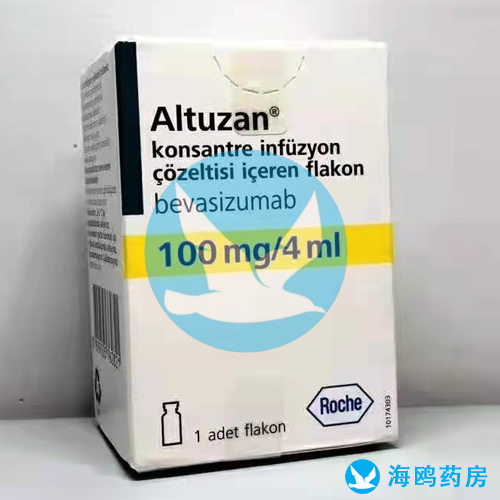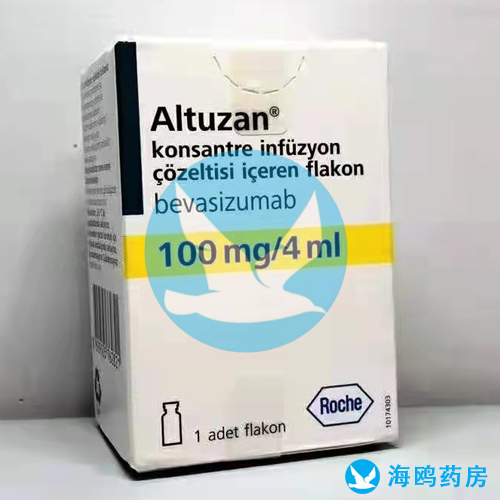- All Drug Categories
- Home
- Anti-cancer Drugs
- Healthcare Products
- Medical Information
- Statement
The combination of ixabepilone (Ixempra) and bevacizumab (Avastin) significantly improved progression-free survival (PFS) vs ixabepilone alone in the treatment of platinum-resistant ovarian cancer, according to data from the phase 2 trial (NCT3093155) published in the British Journal of Cancer.1

Results showed that among the 39 patients who received the doublet, the median PFS was 5.5 months vs 2.2 months in the 37 patients who were given single-agent ixabepilone (hazard ratio [HR], 0.33; 95% CI, 0.19-0.55; P < .001).
Notably, resistance or refractoriness to taxane therapy did not influence the PFS benefit derived between the treatment arms. Comparing the arms while controlling for the effect of these factors resulted in an adjusted HR of 0.33 (95% CI, 0.20-0.56).
“Novel approaches for relapsed ovarian cancer are desperately needed as limited effective combinations currently exist to treat our patients,” senior study author Alessandro Santin, MD, professor of obstetrics, Gynecology & Reproductive Sciences at Yale School of Medicine and disease aligned research team leader for the Gynecological Cancers Program at Yale Cancer Center and Smilow Cancer Hospital, stated in a press release.2 “The results of this study demonstrated a drug combination that may be an effective treatment for this type of ovarian cancer.”
Few effective treatment combinations are available for heavily pretreated patients with platinum-resistant ovarian cancer. The phase 3 AURELIA trial (NCT00976911) previously demonstrated that the addition of bevacizumab to cytotoxic chemotherapy significantly improved PFS in patients with platinum-resistant disease who received 2 or fewer lines of prior therapy; however, the regimen did not demonstrate an overall survival benefit.3
Ixabepilone has been shown to have activity in patients with pretreated ovarian, breast, pancreatic, lung, and prostate cancers, and it has been approved for use as a monotherapy and in combination with capecitabine in patients with locally advanced or metastatic breast cancer.4
This investigator-initiated, open-label phase 2 study enrolled patients who were at least 18 years of age who had platinum-resistant or refractory, histologically confirmed epithelial ovarian, fallopian tube, or primary peritoneal carcinoma. Patients had to have measurable disease per RECIST v1.1 criteria, an ECOG performance status of 0 to 2, and prior treatment with paclitaxel every 3 weeks or weekly. Prior debulking was permitted, and there was no limit on prior lines of therapy received.
A total of 78 patients were randomized between the combination arm (n = 39) and the ixabepilone monotherapy arm (n = 37). All participants received 20 mg/m2 of intravenous (IV) ixabepilone on days 1, 8, and 15 of a 28-day treatment cycle. Those in the combination arm were also administered 10 mg/kg of IV bevacizumab on days 1 and 15 until disease progression, unacceptable toxicity, or death. Participants were stratified based on study site and prior bevacizumab treatment.
The primary end point of the trial was PFS, defined as the time from randomization to progression or death. Key secondary end points included OS, overall response rate (ORR), and safety. CT scans were performed every 2 cycles.
The median age of patients was 67 years both in the combination arm (range, 40-78) and in the monotherapy arm (range, 50-88). Most patients in the investigative and control arms had serous histology (87% vs 78%, respectively), an ECOG performance status of 0 or 1 (92% vs 84%), platinum-resistant disease (74% vs 89%), and did not receive a prior PARP inhibitor (74% vs 62%) or prior weekly paclitaxel (77% vs 73%), but did receive prior bevacizumab (54% vs 57%). Additionally, 46% of patients in the combination arm received more than 3 lines or prior chemotherapy, vs 51% of those in the ixabepilone-alone arm.
Additional results showed that the doublet also significantly prolonged OS vs ixabepilone alone, at 10.0 months and 6.0 months, respectively (HR, 0.52; 95% CI, 0.31-0.87; P = .006). Again, taxane resistance or refractoriness did not impact OS benefit between the 2 arms. When comparing the investigative and control arms and controlling for the effect of these factors, the adjusted HR became 0.55 (95% CI, 0.32-0.94).
Moreover, the combination produced an ORR of 33% vs 8% with the monotherapy (P = .004). Notably, no patients in either arm had a complete response, although 54% and 51% of patients in the combination and ixabepilone-alone arms, respectively, had stable disease at data cutoff. Again, taxane resistance/refractoriness had no independent effect on ORR (odds ratio, 1.36; 95% CI, 0.40-4.69). Among 74 evaluable patients, the durable disease control was observed in 37% of patients in the combination arm vs 3% of those in the monotherapy arm (P = .0001).
No new safety signals were observed during the trial. Seventy patients experienced 681 adverse effects (AEs) that were possibly, probably, or definitely related to the study treatment. Furthermore, 26 serious AEs were reported among 14 patients, 8 of which occurred in the combination arm and 6 of which were reported in the ixabepilone-alone arm (P = .77).
Toxicities that were more commonly expereinced in the combination arm vs the ixabepilone-alone arm included hypertension (36% vs. 8%, respectively), sensory neuropathy (51% vs 19%), and musculoskeletal (56% vs 24%).
Grade 4 and 5 AEs were evenly distributed between the 2 groups. Six patients experienced a grade 4 AE, including 2 patients with sepsis, 2 with neutropenia, 1 with pneumonia, and 1 with anemia. Two grade 5 AEs were also reported, and this included 1 patient with cardiac tamponade in the ixabepilone-alone arm and 1 patient with renal failure in the combination arm. Both effects were deemed unlikely to be related to treatment.
Dose reductions by 20% were required by 64% of participants in the combination arm and 59% of those in the ixabepilone-alone arm. The most common dose-limiting toxicities included peripheral neuropathy (39 events), neutropenia (18 events), and fatigue (129 events).
The efficacy results from this trial warrant further studies with a focus on refinement of predictive biomarkers and the application of the combination to other gynecologic primaries, such as platinum- and taxane-resistant endometrial cancer, according to the study investigators.
“We expect our findings to have major implications in the field of gynecologic oncology since they add a new, effective treatment for these extremely challenging tumors for which there are otherwise few options,” first author Dana M. Roque, MD, associate professor of the Division of Gynecologic Oncology at the University of Maryland School of Medicine and member of the Marlene & Stewart Greenebaum Comprehensive Cancer Center, added in a press release.
References
Roque DM, Siegel ER, Buza N, et al. Randomised phase II trial of weekly ixabepilone ± biweekly bevacizumab for platinum-resistant or refractory ovarian/fallopian tube/primary peritoneal cancer. Br J Cancer. Published online February 11, 2022. doi:10.1038/s41416-022-01717-6
New drug combination shown effective for patients with advanced ovarian cancer. News release. Yale School of Medicine; February 14, 2022. Accessed February 21, 2022. https://bit.ly/3v48Lzf
Pujade-Lauraine E, Hilpert F, Weber B, et al. Bevacizumab combined with chemotherapy for platinum-resistant recurrent ovarian cancer: the AURELIA open-label randomized phase III trial. J Clin Oncol. 2014;32(13):1302-1308. doi:10.1200/JCO.2013.51.4489
Puhalla S and Brufsky A. Ixabepilone: a new chemotherapeutic option for refractory metastatic breast cancer. Biologics. 2008;2(3):505-515. doi:10.2147/btt.s3539
https://www.onclive.com/view/addition-of-bevacizumab-to-ixabepilone-is-effective-tolerable-in-platinum-resistant-ovarian-cancer
Disclaimer:《Addition of Bevacizumab to Ixabepilone Is Effective, Tolerable in Platinum-Resistant Ovarian Cancer》Edited and sorted by Seagull Pharmacy's editors. Please contact us in time if there is any infringement. In addition, the suggestions for drug usage, dosage and disease mentioned in the article are only for medical staff's reference, and can not be used as any basis for medication!

Full Name:Bevacizumab,Avastin
Reference Price:$250.00
Prescribing Information: 安维汀(贝伐珠单抗)说明书 通用名称:安维汀 商品名称:贝伐珠单抗 全部名称:安维汀,贝伐珠单抗,贝伐单抗,阿瓦斯汀,阿瓦斯丁,Bevacizumab,Avastin 1.安维汀适应证: 与氟尿嘧啶联合治疗转移性结直肠癌 与紫杉醇、多西他赛联...